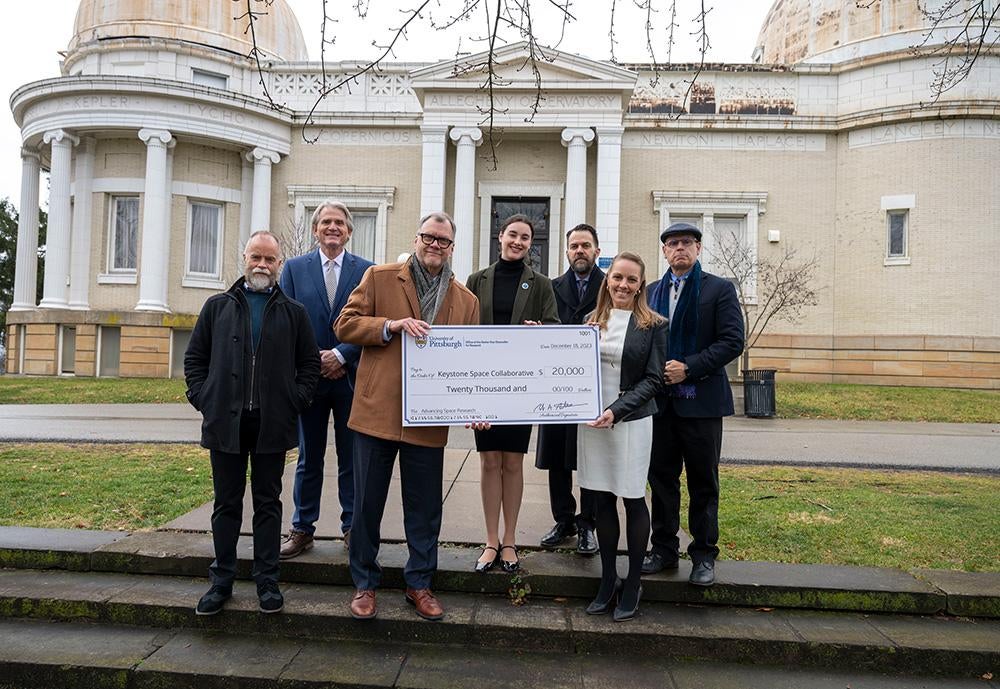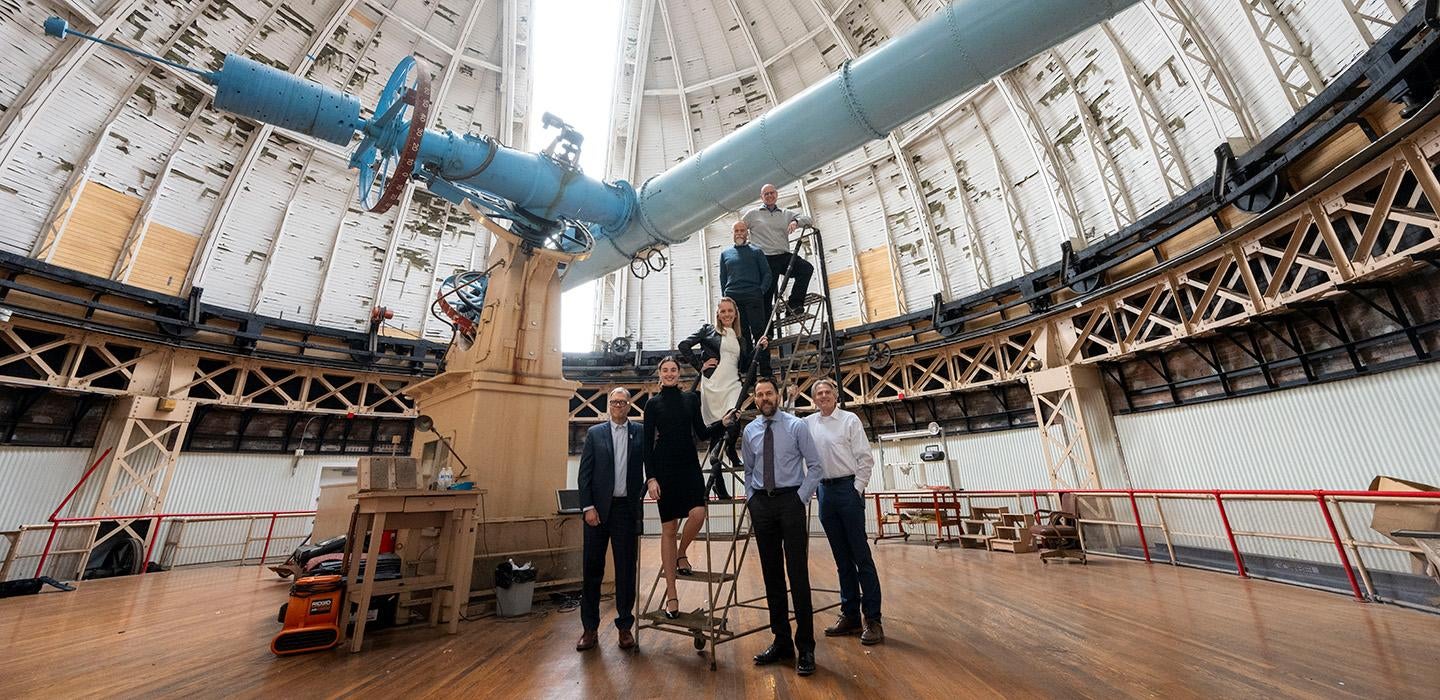
Subscribe to Pittwire Today
Get the most interesting and important stories from the University of Pittsburgh.The University of Pittsburgh has a long history of cutting-edge space science. Pitt researchers were among the first to analyze moon rocks brought back by the Apollo 11 crew, and more recently, they were among the first to use the most powerful telescope in history. They’re already working on its successor.
But the complexities of doing anything in space require collaboration with Pitt colleagues as well as researchers, engineers and scientists at other institutions. Ultimately, it will also require working with with local entrepreneurs and other residents of the Pittsburgh region, as research gets put into practice.
Pitt recently made a move to forge those collaborations by joining the Keystone Space Collaborative with a sponsorship of $20,000. The nonprofit organization supports the growing space industries in Ohio, Pennsylvania and West Virginia, bringing together representatives from academia, industry, investing and government to meet challenges together.
“We’re excited to join Keystone Space and excited to help this ecosystem grow,” said Robert Cunningham, vice chancellor for research infrastructure and a leader of Pitt’s space initiative.

Pitt’s recently launched space initiative focuses on three areas: basic science, engineering and space medicine and biomanufacturing. Partnering with Keystone, which connects more than 700 participants, can help make the connections needed for truly cutting-edge science.
“There is so much potential provided by the prospect of a thriving space ecosystem in our region,” said Keystone Program Director Zoë Karabinus. “Support from institutions like the University of Pittsburgh not only strengthens our academic arm in terms of access to research, thought leaders and experts in the field, but also helps us establish a career pipeline.”
The University’s history of dedication to this sector has already paid off, both for students and industry. “Our graduates have been going to industry and government agencies, including NASA and the U.S. Space Force,” Cunningham said. “Most recently, some of our graduates are staying in the Pittsburgh region and working at companies here.”
Christopher Manderino graduated from the Swanson School of Engineering in 2020 with a master’s degree in electrical and computer engineering. He’s now a systems engineer at Pittsburgh-based Astrobotic, a company that designs and builds a variety of space-based robotics.
At Pitt, Manderino worked with Swanson School Professor Alan George, the department chair and R&H Mickle Endowed Chair of Electrical and Computer Engineering. George also directs the NSF Center for Space, High-performance and Resilient Computing (SHREC), where Manderino worked on hardware that would make its way to the International Space Station.
“Thanks to my studies with Pitt and the SHREC lab, within months from graduation I was already in a position to take on the role of technical lead for a new space computer design from the ground up,” Manderino said.
According to Karabinus, the region’s thriving space ecosystem, if nurtured properly, could compete with longstanding champions of space industry like Texas and Florida. Manderino believes Pitt can play an outsized role within this ecosystem.
“Pitt is in a unique position to plant and foster this vibrant culture in Western Pennsylvania,” he said. “I can see the potential for space engineering at Pitt to be an indispensable bridge to the growing space community, and to bring a new energy to Pittsburgh and Pennsylvania with unparalleled impact.”
The Keystone Collaborative is a foundational part of that bridge — and Karabinus hopes membership in the group will spark meaningful partnerships across the region.
“Partnerships with universities like Pitt are invaluable when it comes to growing the region’s skilled talent pool, as well as tapping into the amazing things Pitt is doing in the areas of space,” she said.
— Brandie Jefferson, photography by Tom Altany


